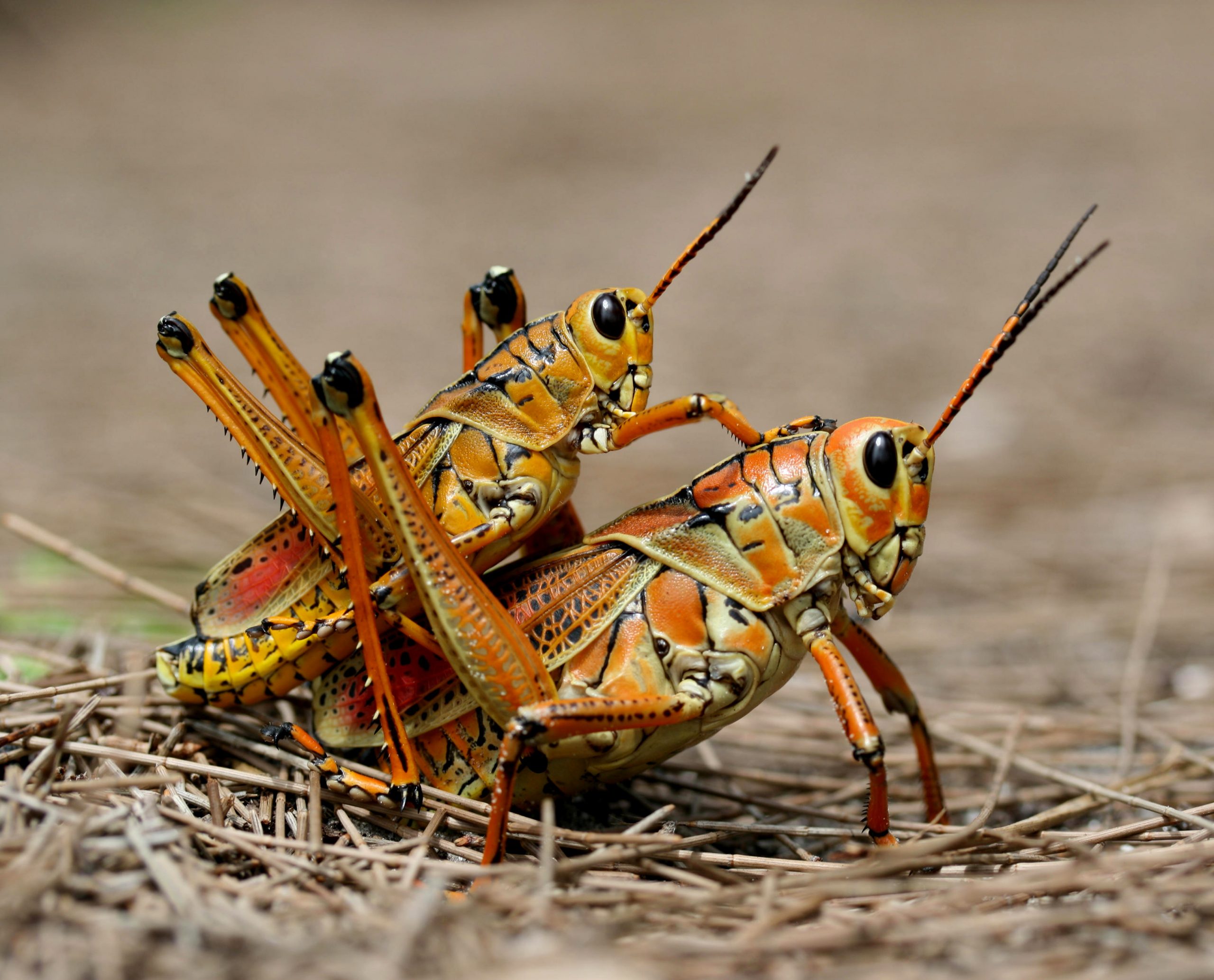15 Insect Anatomy – The Basics
Insect Anatomy: The Basics
This week’s lab is all about insect anatomy, both external and internal. You will encounter lots of terminology, and you will use it later as you learn how to identify various types of insects.
The model insect that we use for this purpose is the eastern lubber grasshopper, shown below. The female (lower) is laying eggs, while the male (upper) has fertilized the eggs.
In the lab, we use lubber grasshoppers, Romalea sp., provided by Ward’s Science. They are reared in the lab specifically for educational purposes. Once preserved, they are not this colourful, and the internal structures become more difficult to see.
I have attempted to photograph the key points of the external and internal anatomy, and will highlight the most important structures that you need to know for this course.
You should also watch the video and other links provided with the lab materials.

By http://www.birdphotos.com – Own work, CC BY 3.0, https://commons.wikimedia.org/w/index.php?curid=4021735
External Morphology – The Basics
This is a whole, preserved specimen of a lubber grasshopper.
Notice that the body looks like it is covered in armour plating. This is the exoskeleton of the insect. The plates are called sclerites, and the softer, membranous areas joining sclerites are called sutures.
The sclerites on the upper, or dorsal, surface of the animal are called tergites, while those on the lower, or ventral, surface are called sternites.

External Morphology – Tagmata
Note the three body regions, or tagmata (singular: tagma): the head, thorax, and abdomen. The head is specialized for feeding and sensory functions, the thorax for locomotion, and the abdomen for feeding, reproduction, and other physiological functions
We will look at each of these tagmata in turn.



Feedback/Errata